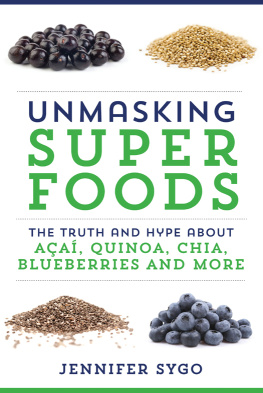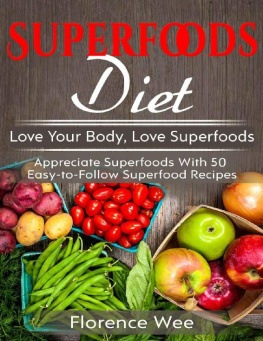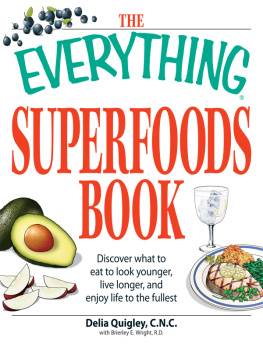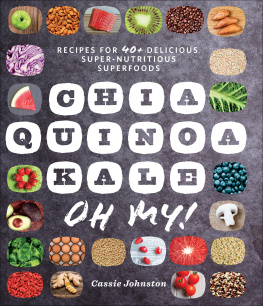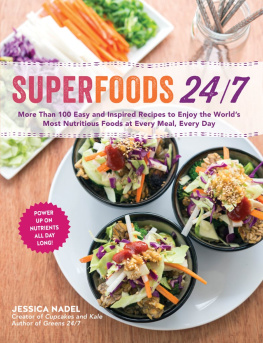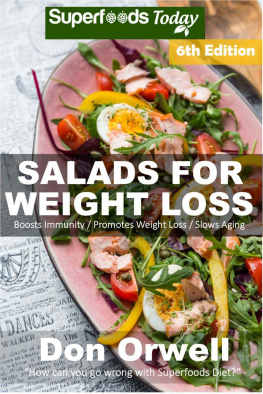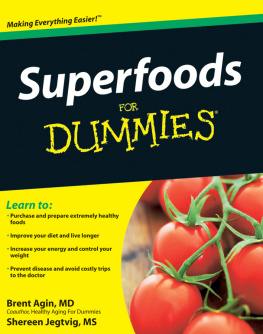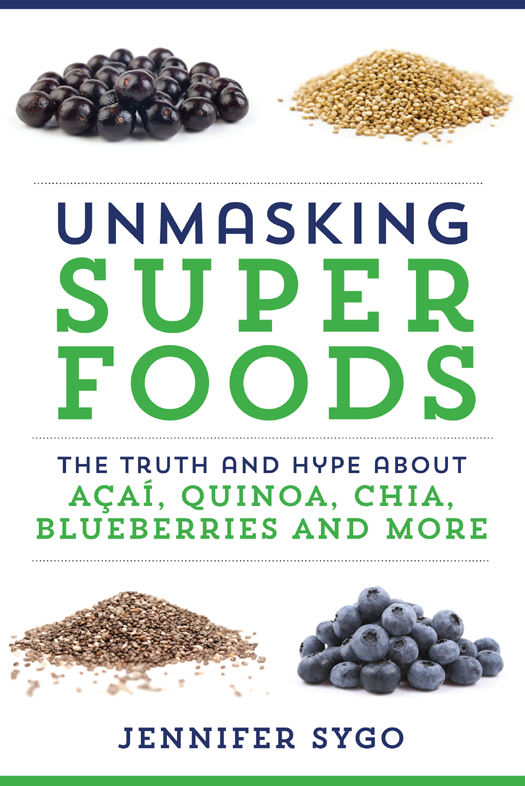UNMPSKING
SUPER
FOODS
THE TRUTH AND HYPE ABOUT
AA, QUINOA,
CHIA, BLUEBERRIES,
AND MORE
JENNIFER SYGO, MSc, RD

For Dave, Ben, and Ryan, for making every day better. And to my mom and dad: Thanks for reminding me that the long-distance runner wins in the end.
F laxseed is so 2006. If I had written this book just a few years ago, I would probably have written about flaxseed. But in 2014, flaxseed is so obvious its almost, like, *yawn.* I can actually picture hipsters of the future dusting off a package of flaxseed and setting off a frenzy of flaxseed collecting. Like drinking Fanta, eating flaxseed would be steeped in yesteryear irony, a time before we spent our free moments debating about whether or not our sprouted gluten-free grains are Paleo, or if there is such thing as an ethical carnivore.
Ironically, considering this books title, I actually struggle with the term superfood. Maybe its the Marxist in me, but Im concerned that it unfairly elevates certain foods above others, leaving us to feel that if our favourite veggie isnt on the list, then it must not have much value. Poor celery! I just dont think that attitude is fair or wise. The fact is, for all of our perceived cleverness, we simply dont know that much about our food, and we certainly dont know enough to say exactly what makes a true superfood. Even the ones that seem the most nutritious have precious little research to tell us whether those extra nutrients translate into anything particularly meaningful; and sometimes, foods that look a little average on paperstrawberries, Im looking at youseem to have pretty clear health benefits. I also balk at making eating and nutrition some kind of competitive sport, where your kale-based smoothie somehow makes you better than me, because Im only munching on carrot sticks. If we need to feel sorry for someone because they dont own a $700 blender to emulsify a weeks worth of groceries, I think weve probably taken a good thing too far. And Im afraid the superfood movement might well be feeding into that.
Thankfully, we might finally be starting to appreciate the elegant complexity of food in its undoctored form. Whole foods have literally hundreds, even thousands, of active compounds, including phenolics, flavonoids, pigments, antioxidants, fatty acids, protein, vitamins, minerals, fibre, and resistant starchesthe list goes on and onand it is the interaction of these nutrients that makes whole foods so special. But to pretend that we know exactly what makes one food super and another, well, average is downright silly. There is too much left to learn, and, frankly, the whole challenge of understanding food is so massively complex that I think were unlikely to ever get to the bottom of it (but hats off to all the good researchers who are devoting their lifes work to trying).
As a result, it is not my aim in this book to create a ranking system of superfoods, although there have been times when Ive been tempted (its hard not to start mentally awarding gold medals when you see just how magnificent the nutrition profile of kale is). Im also not going to pretend this book is in any way a complete picture of all the foods that could somehow be labelled super; basically, you could take any list of whole foods that walk, fly, swim, or grow and make the case that somehow, in some way, they qualify. In fact, some classic superfoods, such as salmon, olive oil, and yogurt, didnt even make it into this book, simply because they have been covered so well elsewhere, and if I didnt stop somewhere, this book could have gone on forever.
What I do want to do, however, is turn a critical eye to all the hype that surrounds so many so-called superfoods. Is there good reason for us to jump off the deep end every time we come across an obscure Himalayan berry? Will paying $40 for a litre of juice really make us live longer? And what about common foods that are both affordable and accessible? Are they any less worthy of our affection? These are important questions in the emerging multi-billion-dollar health food industry.
This book is divided into five sections. The first looks at superfoods that have fallen on the wrong side of the regulators or even the law; it should serve as a cautionary tale about the consequences of us all getting a little drunk on the latest food craze. The second part of the book is devoted to foods that have earned a good chunk of hype, yet are so poorly understood that we should approach them with a dose of caution until we know more. The third section is all about the dirty pleasures of the superfood worldsuperfoods that have been cast aside in the press or the medical literature and yet might have more to offer than their reputation suggests. The fourth section is all about some of the classic superfoods, but with careful consideration of what we really know about them and where our false assumptions lie, while the last part of Unmasking Superfoods looks at certain foods that might not have the exotic appeal of goji berries but deserve more attention than they get.
1
OVERHYPED, OVERPRICED, OR JUST PLAIN BOGUS
T he superfood movement is ripe for fraud. With a growing consumer population keen on fixing all that ails us through food, the goal is simple: Find the most nutrient-rich foods you can, and eat as much of them as possible. Now, this is all well and good when were talking about apples and broccolifoods that are readily accessible, grown locally, and generally affordable. The picture muddies, however, when we fall in love with rare and mysterious foods (most often a berry) from a land far away, with tales of healing powers and the ability to provide boundless vitality. Amazing, we think. One shot of this per day and Ill finally get a six-pack, clean out the garage, and maybe even run across the Sahara. Brilliant! And really, who couldnt use more energy? Forty bucks doesnt seem unreasonable to cure arthritis, eczema, insomnia, low sex drive, and wrinkles. How could it? Youre worth it! And while youre at it, since itll help prevent cancer, heart attacks, and Alzheimers disease, maybe you should take two.
The nutrients, the antioxidants, and the health claims associated with so many superfoods often sound too good to be true, and if the testimonials are convincing enough, we might just find ourselves handing over our credit cards for a months supply of a drink, powder, or potion. And we might just feel better when we take itfor a while.
If youre a savvy food marketer or business person who has an interest in the massive health and wellness market, youd probably like to get one of these so-called superfoods into consumer hands, and ideally, make a few bucks in the process. Of course, geography poses a problem: Its not so easy to get a Himalayan berry onto grocery store shelves halfway around the world. So, if you cant sell it fresh, then what? You turn it into a powder, pill, or juice, but that increases production costsso youd better have a good marketing strategy to convince the public its worth spending their hard-earned cash on. This is the reality in a competitive health food industry: You have to do something to get your product noticed. The best way to do that? Tell the world your food cures just about everything, or get it on TV (The Dr. Oz Show is a great place to start).
This chapter is all about foods that found themselves on both sides of the superfood hype machine: built up by promises of nutritional greatness and then brought back to earth by investigative journalism, FDA warning letters, and in some cases, lawsuits. For better or for worse, these foods, in their original form, might actually be quite good for you; unfortunately, that feel-good quality tends to get lost when the cease and desist orders are issued and when consumers are duped by misleading or fraudulent claims.

